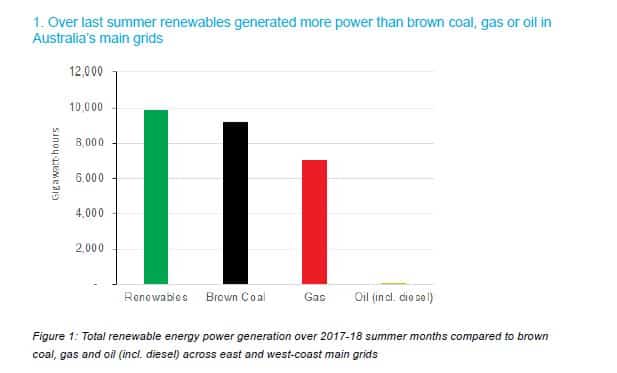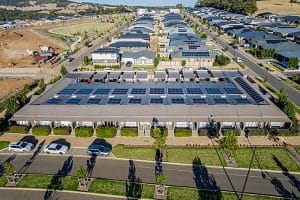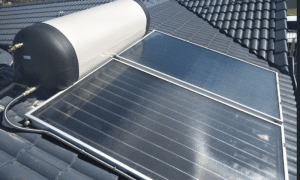The latest Renewable Energy Index report from Green Energy Markets shows Australian renewable energy sources generated more electricity over summer than either brown coal, gas or oil fuels.
The data indicates generation from renewables (including wind and solar power) was second only to black coal.
Rooftop solar installations also reached high levels during February, close to that of last November’s all-time record. The report indicates that generation from renewable sources is likely to increase substantially over the next few years.
Read on for a breakdown of the report’s main findings on Australian renewable energy sources.
Key highlights of the March 2018 report
Renewable sources (wind, solar, bioenergy and hydro) generated nearly 10,000 GWh of electricity during the 2017/18 summer period. This is 8 per cent higher than brown coal and 40 per cent higher than gas generation.

Renewables accounted for 17.6 per cent of total electricity generated in the main grids in February, enough to power nearly 8 million homes. This enabled us to avoid over 2 million tonnes of carbon dioxide or the equivalent of 8 million cars.
Australian renewable energy sources
The report also found:
- During peak times (daylight hours), the average output of solar was up to 162 per cent higher than that of Victoria’s Hazelwood coalmine (now decommissioned) over the previous summer.
- During February, there were more than 5,000 MW of large-scale solar projects under construction. These projects supported enough work to employ over 17,000 people.
- More than 17,000 rooftop solar energy systems (117 MW capacity) were installed during February across the country. These installations supported over 5,500 jobs, and should deliver more than $200 million savings in power bills over ten years.
- NSW/ACT had the highest number of rooftop solar installations during February. Queensland was next, then Victoria, WA, SA and Tasmania.
- Approximately one quarter of renewable energy generation in February was from rooftop solar.
Could renewables fill the gap left by the Hazelwood closure?
According to Green Energy Markets’ data, the answer appears to be yes. The Hazelwood coal-fired power station was decommissioned in 2017 after almost 50 years of operation.
The station produced about 20 per cent of Victoria’s energy needs. It was also notoriously polluting, contributing substantially to the country’s greenhouse gas output. Emissions included nitrogen oxide, sulfur dioxide, lead, mercury and other noxious substances.
Green Energy Markets’ data shows that during summer, peak-time solar generation exceeded the maximum output of Hazelwood over the previous summer, of between 48 and 162 per cent. The report also found that the large growth in solar PV in recent years was “pivotal” to renewable energy’s contribution to peak demand.
As the price of solar panels in Australia continues to fall, we can expect to see many more households and businesses looking for solar quotes and installing rooftop solar. And if this latest report is anything to go by, the future of solar energy in Australia looks positive.







































